
Written by Taylor Blanchard
The release of the Pentax 17 in 2024 was an exciting moment in the film community: the first major camera manufacturer (if you include Canon, Nikon, Ricoh/Pentax, Fujifilm) to release a new film camera in two decades. This doesn’t include specialty (like the Intrepid large format line) or instant cameras, Lomography cameras, or very inexpensive, limited feature cameras like the Reto Ultra Wide and Slim.
Pentax released a set of videos leading up to the debut, many featuring the camera’s primary designer, TKO. The videos detailed the care the company put into designing the Pentax 17, while also sharing that they wanted to design a new film camera while many of their engineers were still living and able to share their knowledge. Pentax generated buzz for the camera’s release by sending it to several retailers and film personalities in advance.
A younger generation has been drawn to film photography, and Pentax explicitly said the new camera was designed with that audience in mind. And the release surely didn’t go unnoticed, as it seemed like everyone in the film community was talking about it. With the “it’s time for film” tagline and their social media blitz, the Pentax 17 spawned a torrent of blogs, video reviews, and social media posts spanning the complete enthusiasm spectrum: from passionate fervor to complete disdain.
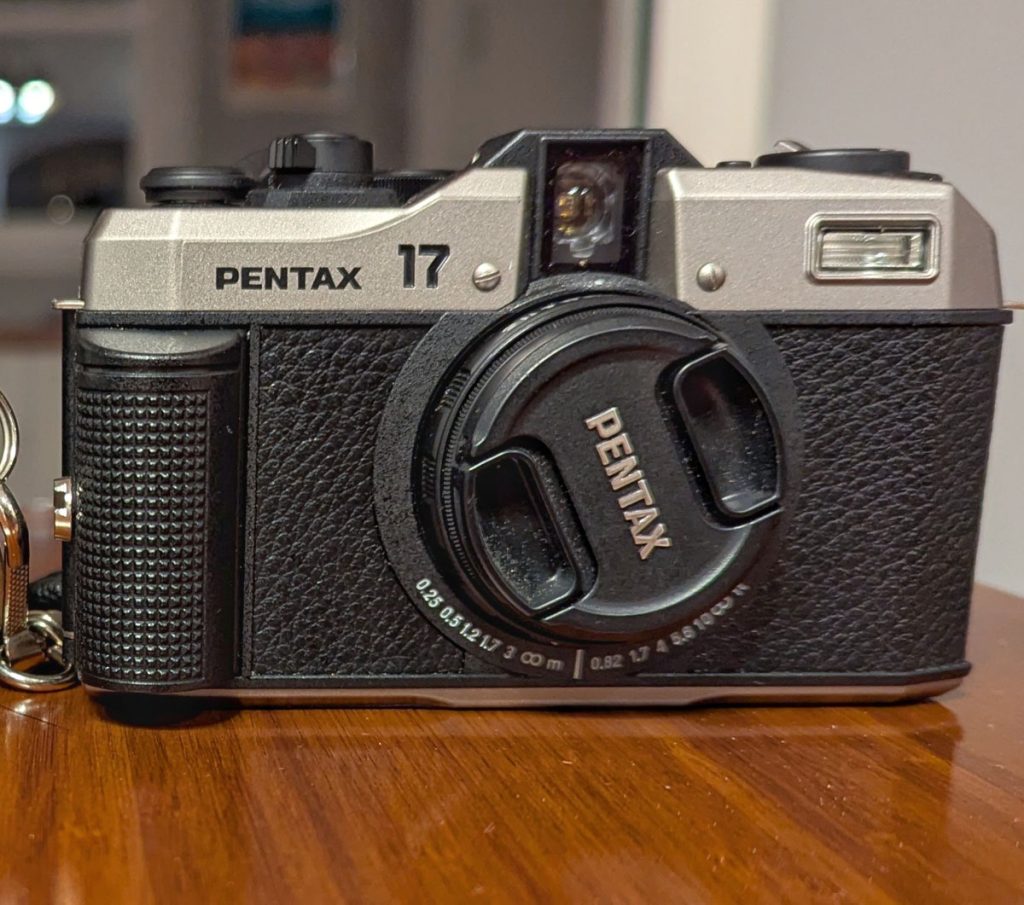
As much as I wanted to support Pentax and their extensive years of research and development to make a modern film camera, I didn’t rush out to buy the camera. At $599 upon its release, it was more than I wanted to spend. And practically speaking, I wasn’t sure it would fill any void in my collection.
That said, I remained very curious about it, and I was wistful that I could get one. More than a year after its release, I borrowed one from Cannon at Charlotte’s The Photo Outfitters, who graciously offered it to me for a test run. I shot four rolls of film in various conditions, both close to home and while traveling.
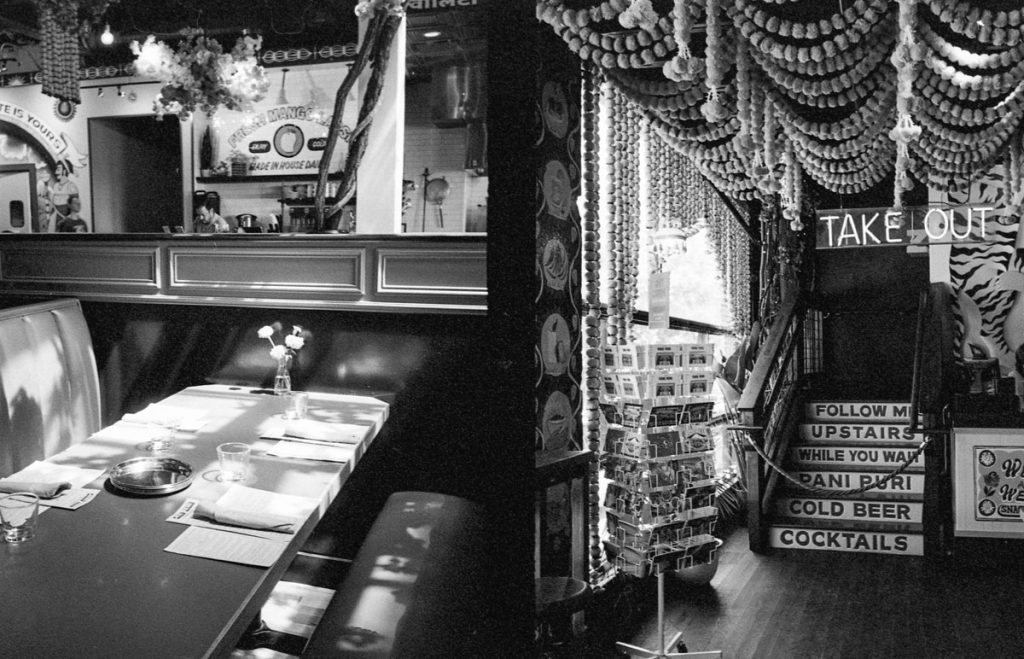
An Overview of the Pentax 17 Half-Frame Camera
In case you missed the details, the Pentax 17 is a half-frame camera: each exposure is half the size of a regular 35mm frame. That means a roll of 24 exposures will give you 48 half frame exposures, and a roll of 36 exposures will give you 72. The half frame is the source of the “17” in the name, referencing an image capture of 17x24mm.
The camera is compact and quite sturdy. The top and bottom plates are magnesium alloy and the rest is made of plastic, although the plastic does not feel flimsy. Ergonomically, it’s well laid out, and the grip is nice to hold. The grip on the right side holds a CR2 battery, which makes sense because it’s compact, but note that CR2 batteries aren’t as easy to find as other batteries.
On the top left side of the camera is an ISO dial and button to set the ISO, plus an exposure compensation dial that allows adjustments of ⅓ of a stop from -2 to +2. The camera can support film from ISO 50-3200; just know that it does not read the DX code on your film. With the exposure compensation dial, you can push or pull film less than 50 and greater than 3200, or shoot a film less than 50.
The lens is a fixed 25mm f3.5 lens, which is on the wider side. In the half-frame format, it’s equivalent to a 37mm lens on a 35mm camera. The lens offers 9 aperture blades, 3 elements in 3 groups, with modern coatings to reduce flare and aberrations. The Pentax 17 uses Ricoh’s HD coating system, delivering “optical characteristics which deliver ideal color balance,” according to the company. The lens filter is 40.5, a more unusual size. The lens cap is easy to take off and clip back in.
The camera is a manual zone focusing system, so you set your focus before shooting. It offers 6 focus options designated by icons: macro (flower), tabletop (knife and fork), extremely close (1 figure), close (2 figures), medium (3 figures), and far (mountains).
On the top of the lens is a dial to set the focus distance by selecting one of the icons. At the bottom of the lens, the camera has a corresponding dial that shows the focus options in meters and feet. So, if you select the tabletop icon, you can see on the bottom of the lens that’s 1.7 feet or 0.5 meters. It’s quite an ingenious setup. For macro shots, the included wrist strap also measures the distance to your subject, since the focus zone is so narrow.
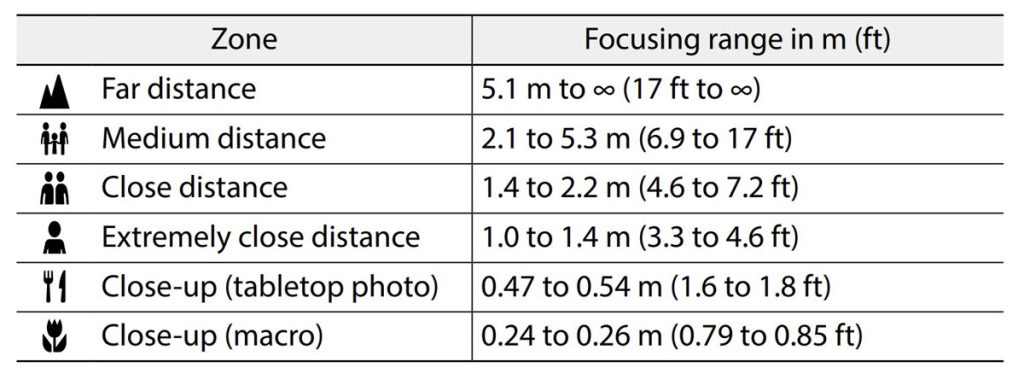
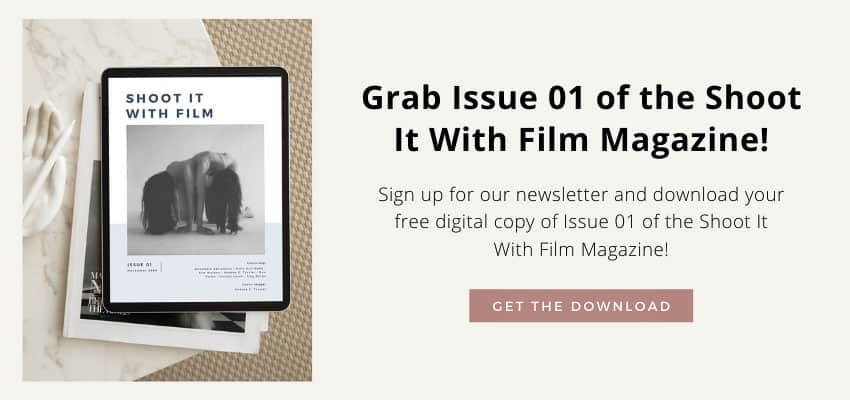
On the top right of the camera are the camera settings, the on/off dial, and the film advance lever. The camera settings are designated by images/letters shown in 3 colors:
Blue = general shooting mode
- AUTO = Full auto (fixed focus point, auto exposure, auto flash) – general all-purpose shooting. Excellent when you want to point and shoot and don’t want to worry about setting a focus point.
White = no flash
- P = Standard (set the focus mode, auto exposure, flash off) – when you want to select the focus, such as macro or distance, and don’t want the flash
- Moon/Slow-speed shutter (set the focus mode, flash off) – for twilight photography
- BOKEH = Maximum aperture priority (camera automatically selects the largest aperture, as wide open as possible, flash off) – if you want a shallower depth of field, use with the macro or tabletop for most image separation
- B = Bulb (for long exposures, flash off) – recommended with a tripod and cable release. If you don’t have the cable release, the exposure will be as long as you have the shutter depressed
Orange = flash modes
- P = Daylight sync (Set the focus mode, flash on) – or backlit subjects during the daytime
- Moon & Flash = Slow speed sync (Set the focus zone, Slow-speed program auto exposure, Flash on) – for twilight or evening photos where you want to illuminate the subject and retain the detail in the back
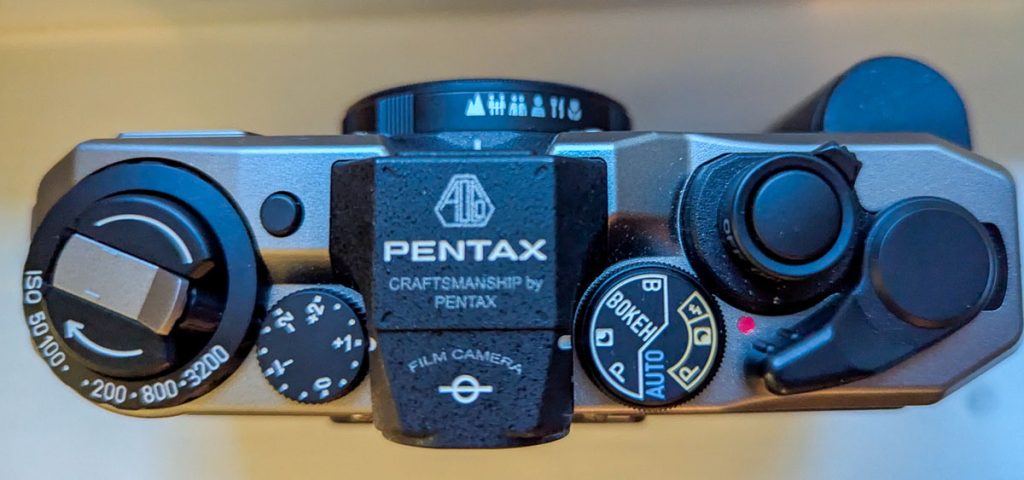
Other than when you have the camera in bulb, the shutter speed is set automatically from 4 seconds to 1/350. The aperture is also set automatically. The only mode close to aperture priority is the BOKEH setting. Because the lens is so wide, and since you don’t set an f stop, you’re usually not getting a lot of depth of field in your images, even in BOKEH mode.
On the back is a slot for putting the top of the film box so that you don’t forget what film you have loaded.
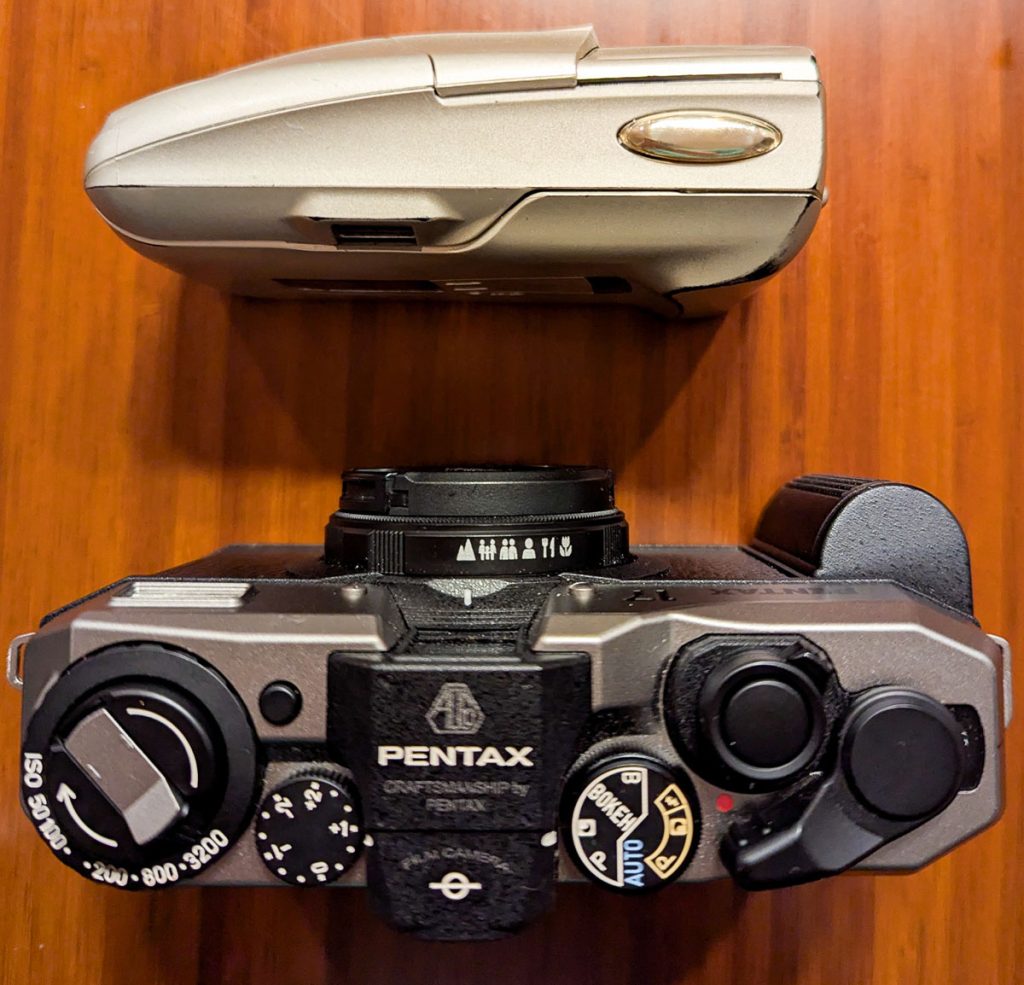
Pentax 17 Specifications
Film Format: 35mm
Frame Format: Half-Frame
Focal Length 25mm (35mm Equivalent: 37mm)
Max Aperture: f/3.5
Focusing Type: Zone-focusing, 6 zones
Self-Timer: No
ISO/ASA Film Speed Options: 50 to 3200
Exposure Compensation: ±2EV(1/3EV steps)
Flash: Built-In
Battery: 1x CR2 (Included)
Dimensions: 5 x 3.1 x 2″ / 127 x 78 x 52 mm
Weight: 10.2 oz / 290 g (without Film and Battery)
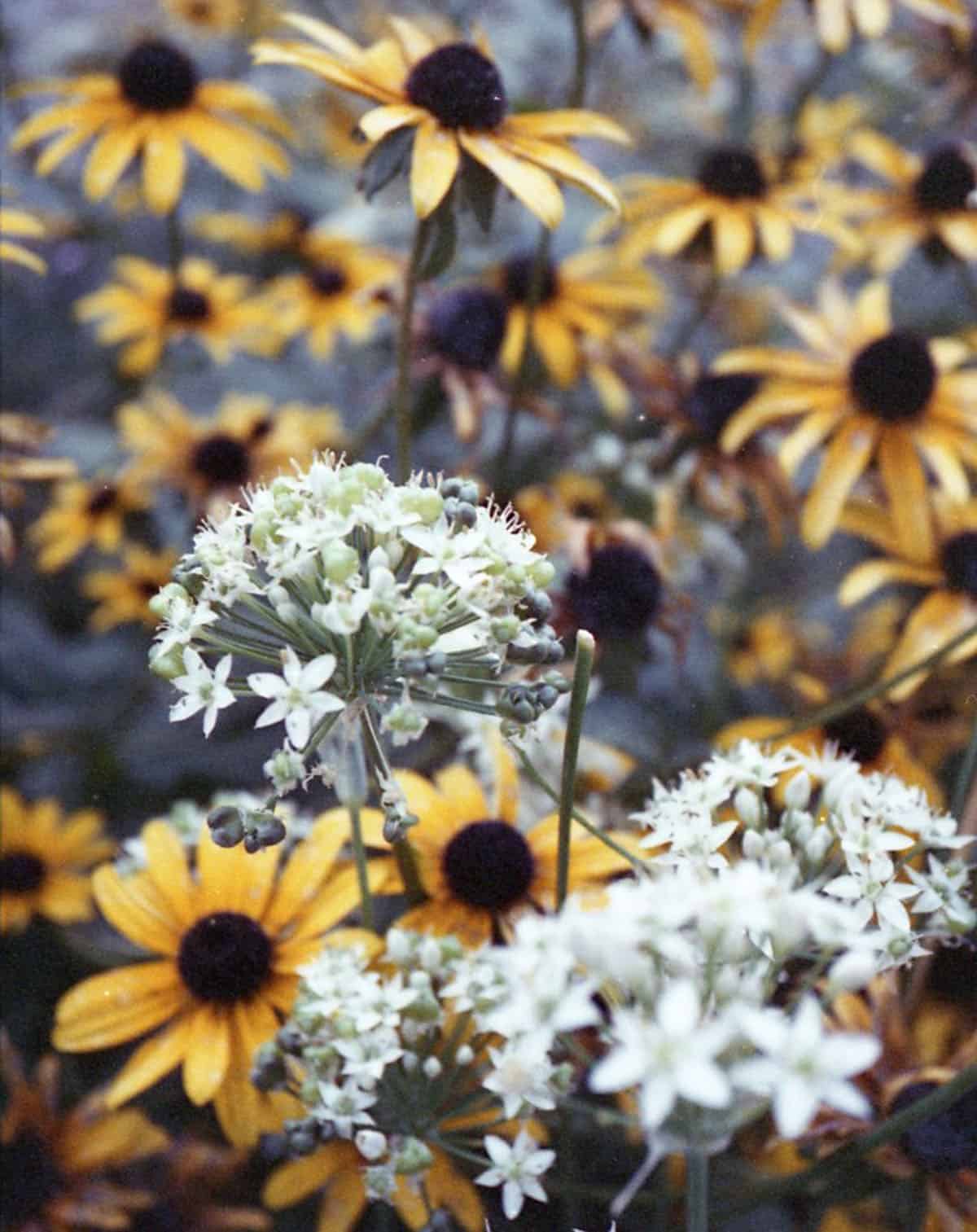

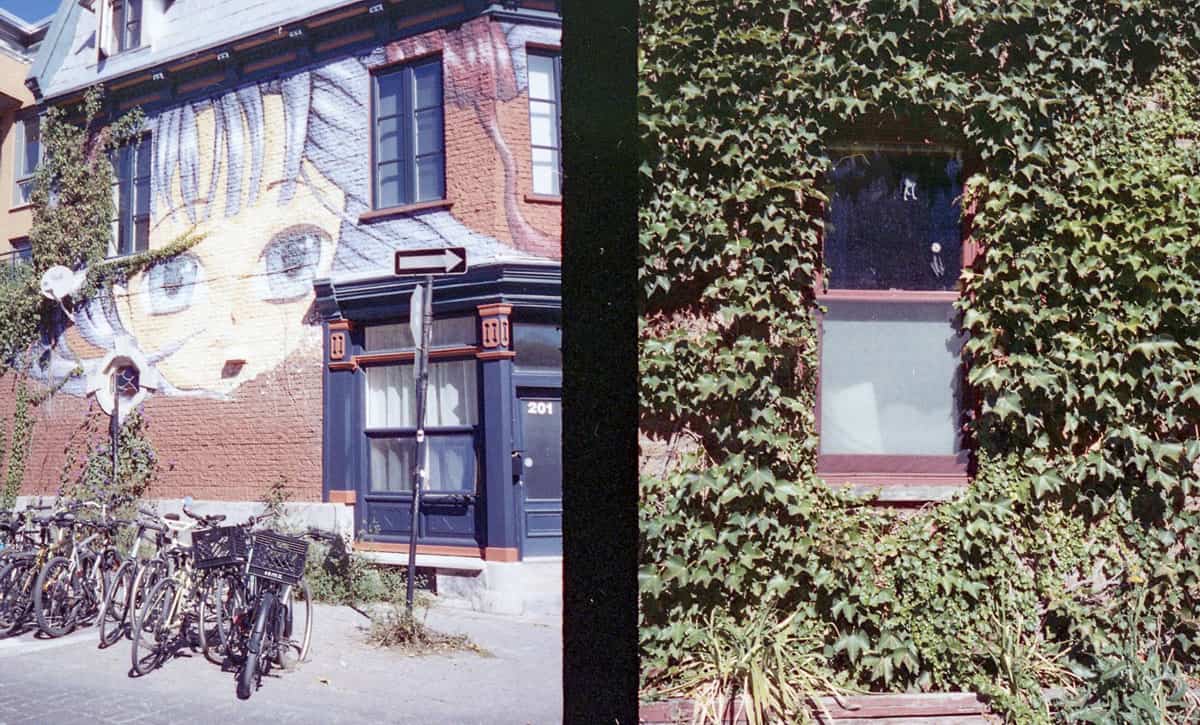
The Pentax 17 in Action
The Pentax 17 is easy to load with film and similar to other manual advance 35mm cameras. You open the back of the camera by pulling up on the rewind knob. Then, you drop the film canister into the compartment.
There is a red marking to help you line up the film leader with the take up spool. You depress the shutter button to advance the film, confirming that it’s been taken up. Then, you close the back. Just like many other cameras, you can watch the rewind knob to ensure the film is advancing. If that turns, you’re golden.
Set the ISO of the film you just loaded, and then “it’s time for film!”
Because the camera is a half frame camera, when you look through the viewfinder, the orientation is vertical. If you’re someone only shooting 35mm full frame, this might be an adjustment. I shoot a lot of different formats, plus I love shooting vertically, so this doesn’t bother me. You can shoot landscape by rotating the camera, although I rarely found myself switching the orientation with this camera.
When you look through the viewfinder, you’ll see two sets of framing lines: the viewfinder shows a parallax framing window when shooting in macro or tabletop.
The viewfinder is very bright, even in challenging lighting conditions, and framing shots is quite easy. It gives two framing guides: the smaller inner frame is for macro shots to correct for any parallax issues (since you are not taking the photo through the same lens you’re using to shoot) and wider framing lines for regular shots.
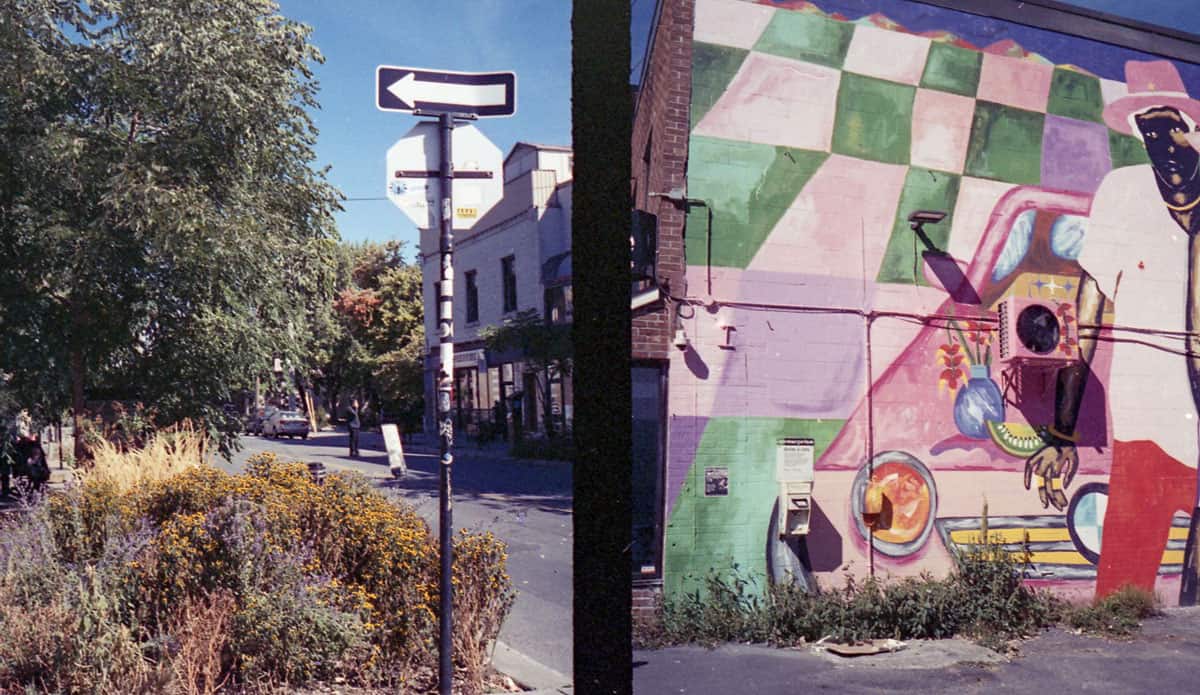
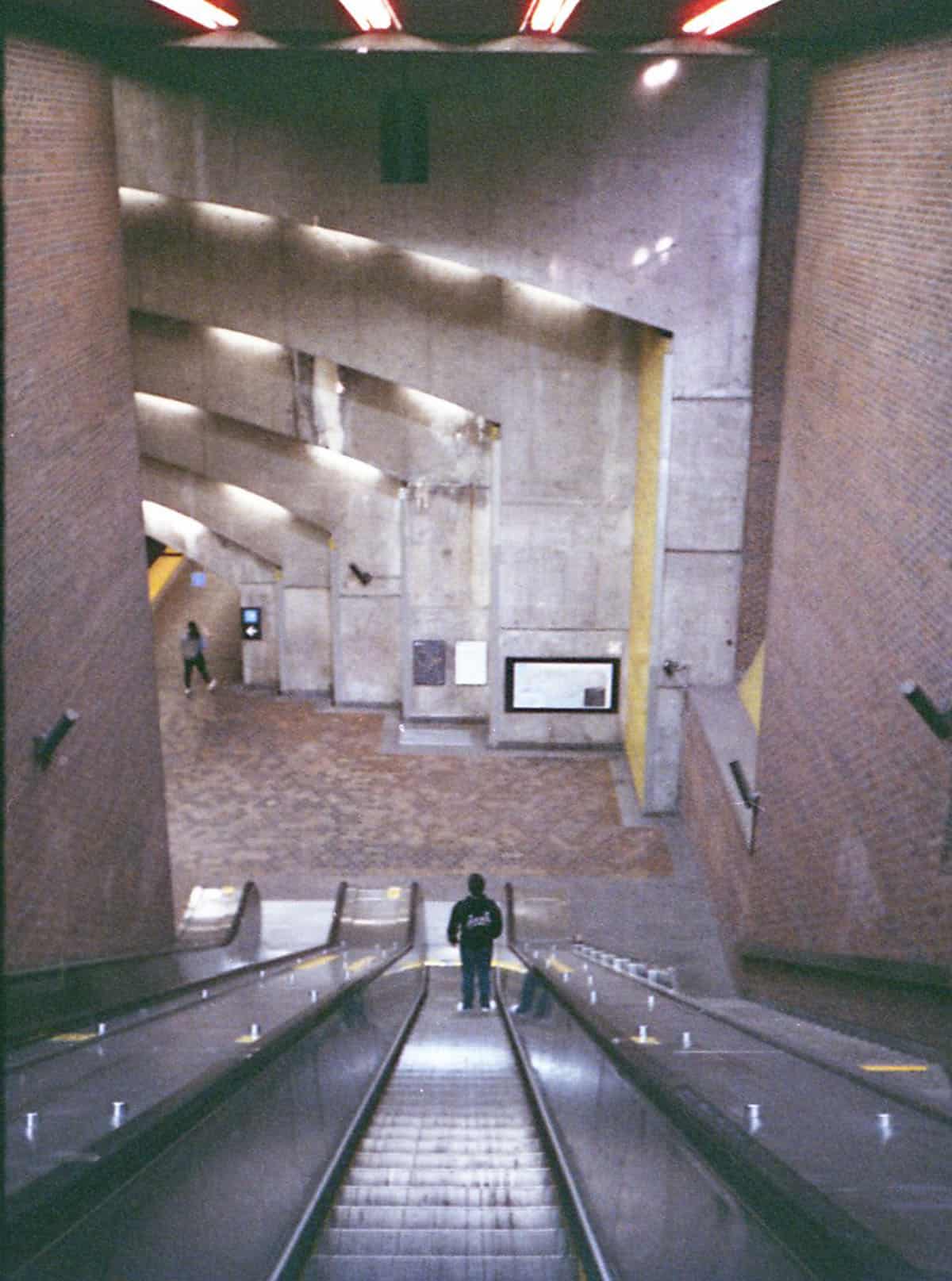

The zone you selected also appears in the viewfinder for confirmation before shooting, which is a really great feature. As someone who also uses Holga cameras, I often forget to verify the zone I’ve selected, but that was never an issue with the Pentax 17.
Two lights also appear in the viewfinder – orange and blue. This is where the Pentax has a very cool feature: if you leave the lens cap on, the blue light will flash quickly to remind you! The blue light flashes slowly when the camera is in macro mode. Both lights blink if you didn’t advance the film after the last shot. Once you remember the many light and blinking speed options, it’s a handy set of features.
After framing your image, you depress the round shutter button on the top. It makes a nice clicking sound. Then, you use the film advance lever to move to the next photo. It does not allow for double exposures.
A gripe I have with the camera is that the film counter is very small and tough to see. You can get a general sense of what exposure you’re on, but it’s tough to see a precise number because the hatch mark guides are small. Perhaps the younger target audience for this camera won’t have the same issues reading the exposure count.
When you’re done with a roll, simply depress the rewind button and manually wind the film back following the arrow on the dial. This again is just like many other film cameras.


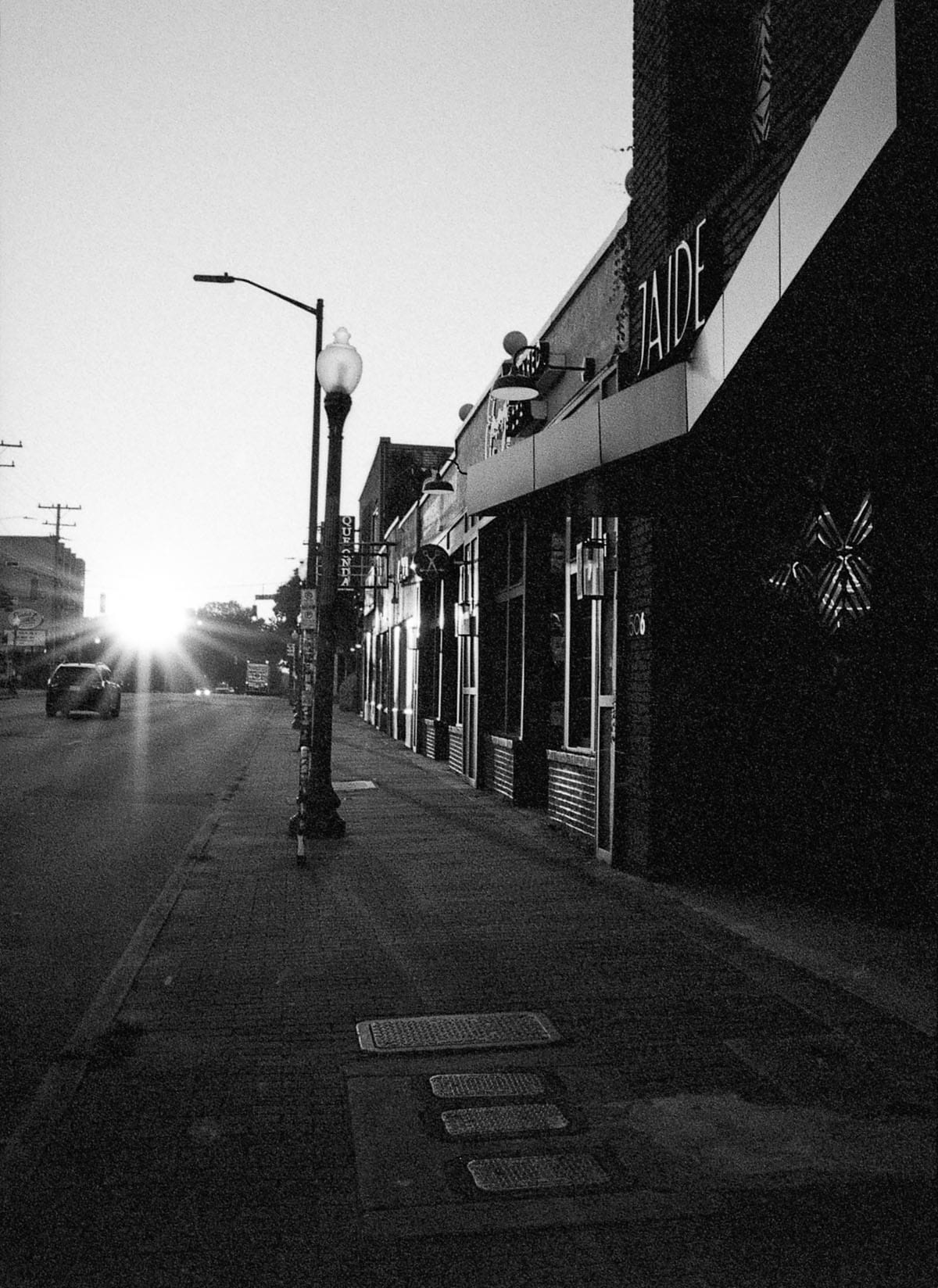
Results
I shot three rolls of 400 speed film, and one roll of very expired film: Kodak Tri-X 400, Candido 400, Orwo Wolfen NC 400, and an expired Kodak Gold 100 from my friend Rachel. The Kodak Gold 100 was one of those 12 exposure rolls, which was great for half frame. In retrospect, these films were not ideal for testing the image quality. Even with these grainier films, the camera is sharp. The lens delivers great contrast and color.
One of the standouts of the Pentax 17 is its meter, which is very accurate and performs well in a variety of difficult lighting situations – far exceeding the older meters on my 35mm SLRs (especially better than the Canon AE-1 and Olympus OM-1). I loved that the camera has the exposure compensation, yet unless you want to rate your film at a speed other than box speed, or are in a very challenging lighting situation, you don’t really need it.
I tested a few shots using the flash and not, for comparison, and I chose a non-flash setting for several indoor and museum shots. The flash provides even illumination across a subject that’s relatively close.
I struggled with selecting the correct focus distance a few times. I found the macro worked well – the camera I borrowed didn’t have the wrist strap so I had to estimate the correct distance. I appreciated the tabletop setting, a distance often overlooked in other zone systems. Based on the advice of others, I often found myself shooting in AUTO if I didn’t want to select the focus.
As you can with any half frame camera, I loved creating diptychs – two images on one frame. It’s a fun way to push yourself by photographing a scene close and further away, or mirror image shots, or shots with a similar color story. I also made a point to take a photo of my husband on one frame, and have him take a photo of me on the other – to tell a story of us together in a specific place.
I scanned the negatives with my Epson V800, and it scanned the full 35mm frames. I had to rescan to capture the diptychs if they didn’t line up automatically. If I didn’t have a diptych or wanted to show only one frame, I cropped the photo in Adobe Lightroom. Scanning and editing half frame shots is more time-consuming, and I understand why some labs charge more for half frame scans.



What’s Next for Pentax?
I understand the initial disappointment from some of the detractors: everyone wants a new film 35mm SLR (and I would love to see a modern medium format camera, although my Pentax 645NII is near perfect). Pentax originally said the 17 was their first of many possible new film camera releases; however, TKO, who was the face of the Pentax 17, is no longer with the company.
Earlier this year, there were rumors that Pentax was discontinuing the 17 and pausing their film efforts completely. Ricoh later clarified that they’re seeking input from photographers before deciding what’s next. They didn’t give a timeline for when we’ll hear more.
At the same time, Ricoh made it clear that the Pentax 17 is still a very small part of their overall demand. While there has been a surge of interest and enthusiasm in film photography in recent years, it’s still dwarfed by digital.
That leaves us wondering if Pentax will release another new film camera. I certainly hope so.

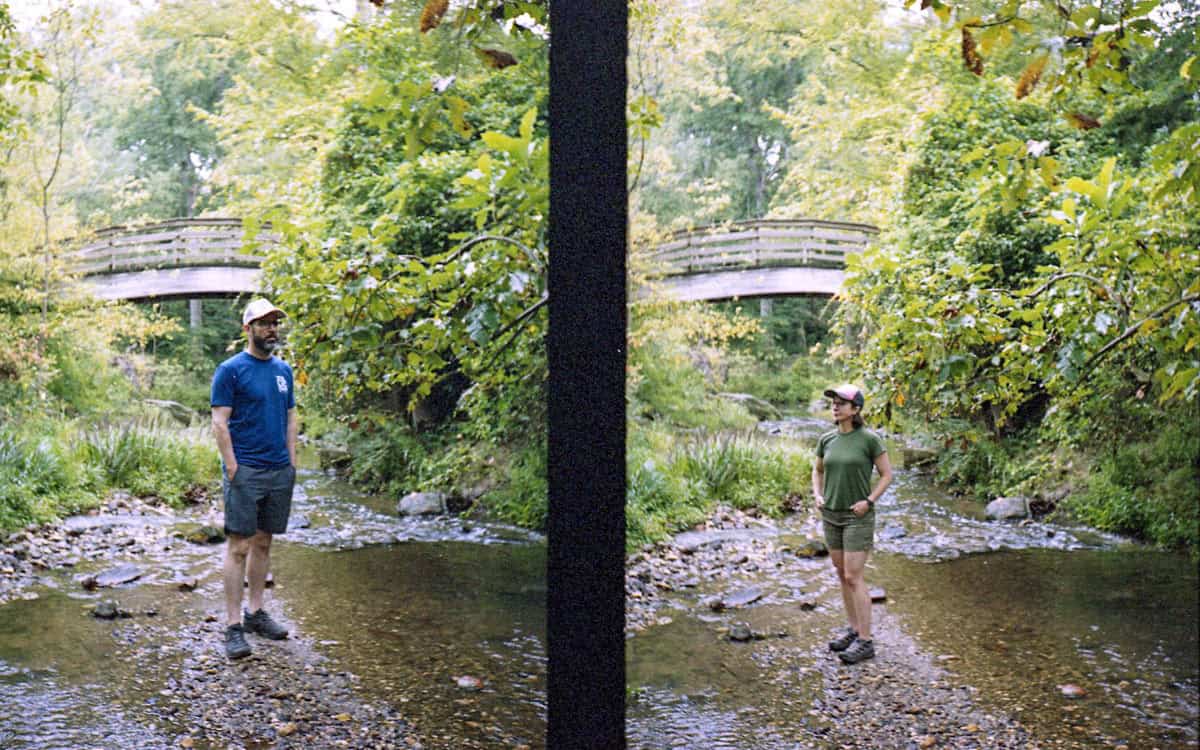
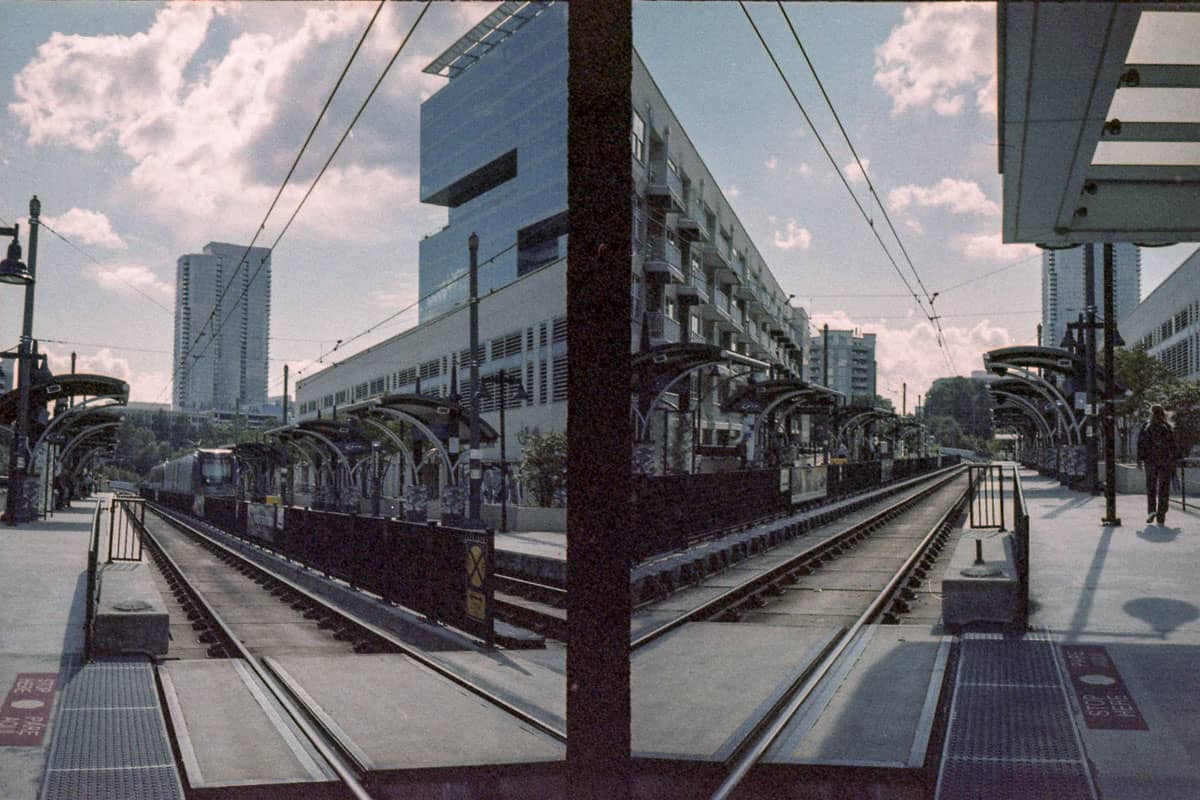
Conclusion
I absolutely love the Pentax 17, and it’s a joy to shoot. The lens is fabulous and quite sharp. The meter is very accurate in many challenging lighting situations.
I thought I would struggle to finish so many exposures; yet because the camera is so compact and easy to use, I found myself using it when I might not have bothered with a more complex camera. I felt freer shooting this camera and experimenting since I wasn’t worried about wasting film.
In addition to the small film number window, another gripe with the camera is that the dials on the top of the camera turn too easily when I have it in my bag.
I would recommend the Pentax 17 for anyone looking to get into film photography for the first time. I also recommend it to anyone who wants a new film camera with modern lens coatings and a modern exposure meter. As many have pointed out, you can purchase less expensive film cameras on the secondhand market, but they are aging and not under warranty. If reliability is a consideration, the Pentax 17 might be worth the extra money upfront.
It’s an excellent everyday camera and is perfect for travel. While you will get more bang for your film buck with a half frame camera, you might spend more time or money on scanning.
In recent months, the Pentax 17 has been priced in the $499 range, which might make it a bit more accessible. The Pentax 17 is now back on my wishlist, since I had to reluctantly return it to The Photo Outfitters.
Do you have this camera or have any questions? Let me know in the comments – I love hearing from you!
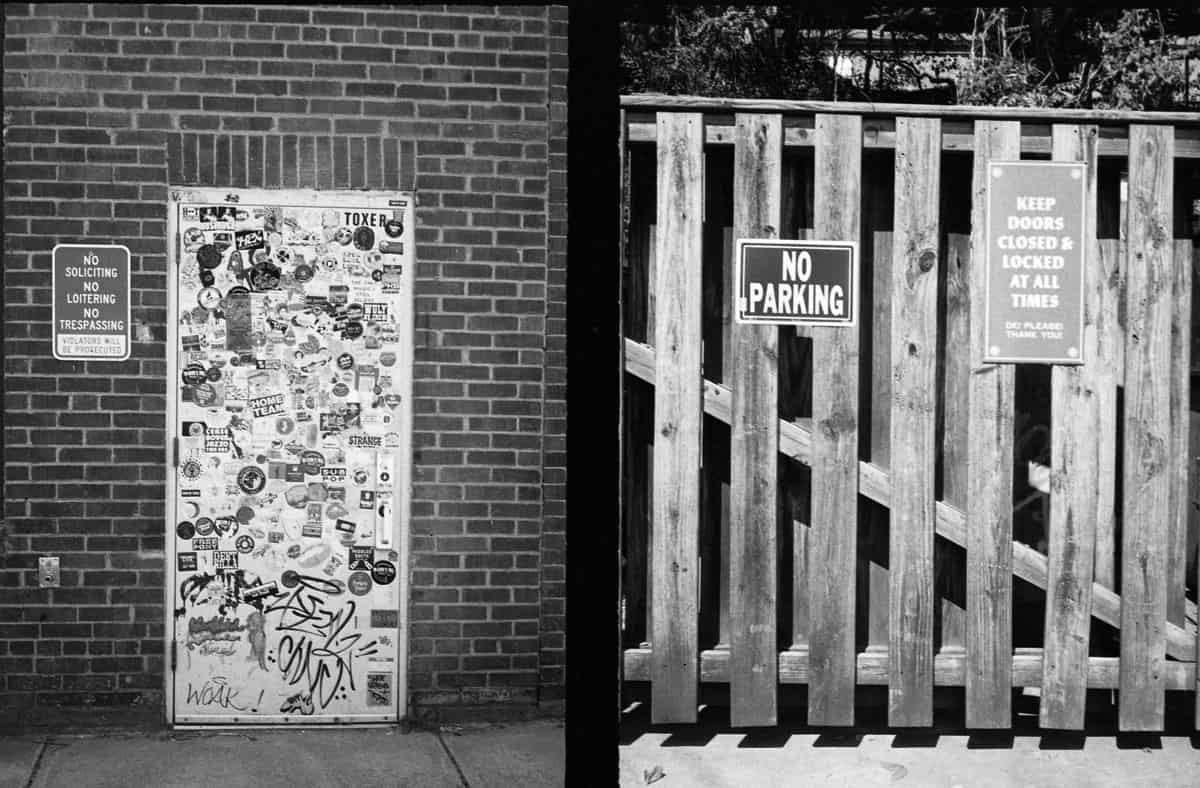
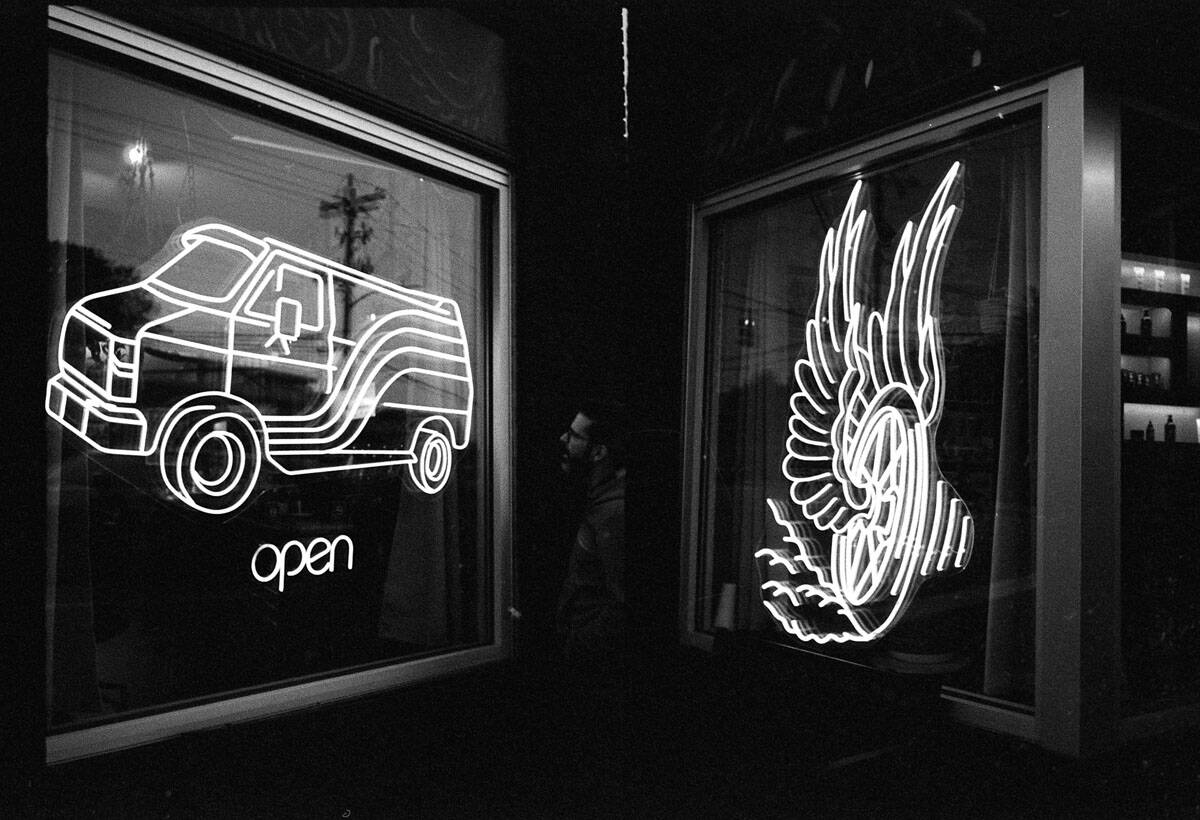
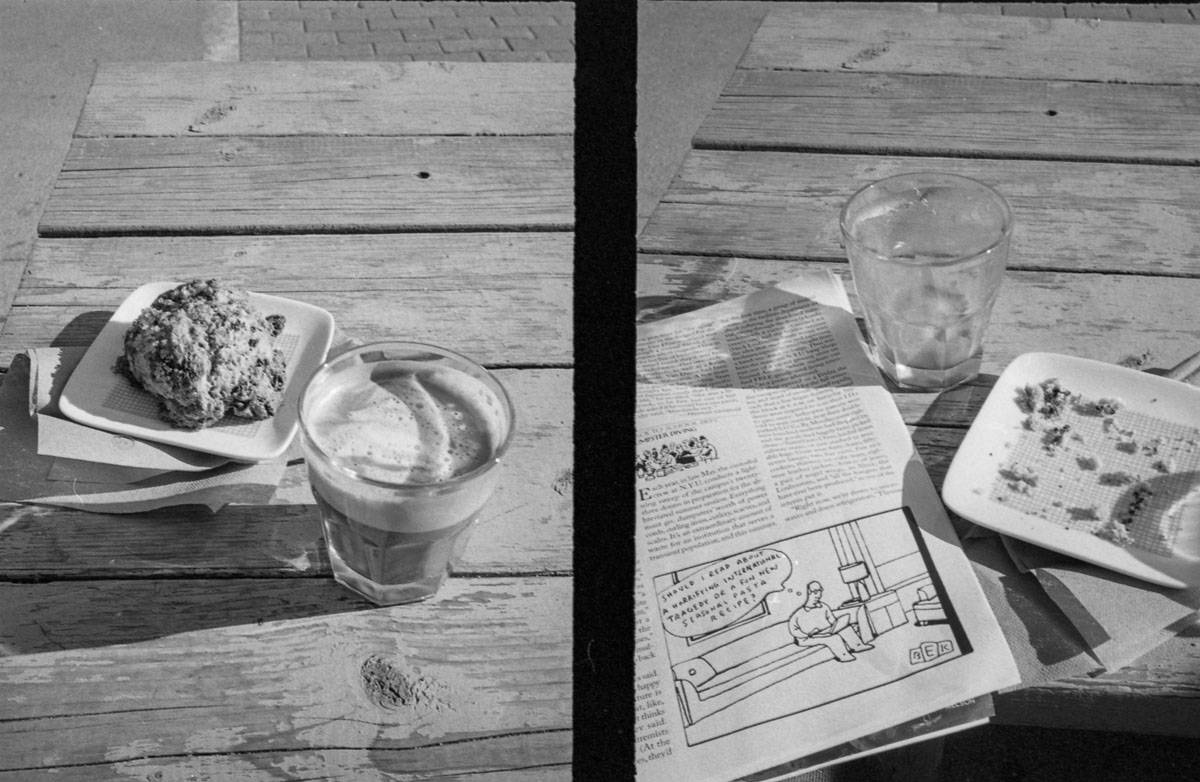
Thank you so much, Taylor! Taylor is a regular contributor here at Shoot It With Film, and you can check out her other articles here, such as Pushing Film to the Limit: Ilford HP5+ Pushed 3, 4, & 5 Stops and Enlarging a Negative for Contact Printing: The Analog Process.
You can also check out more of Taylor’s work on Instagram.
Leave your questions about the Pentax 17 half-frame film camera below in the comments, and you can pick one up for yourself here on Amazon.
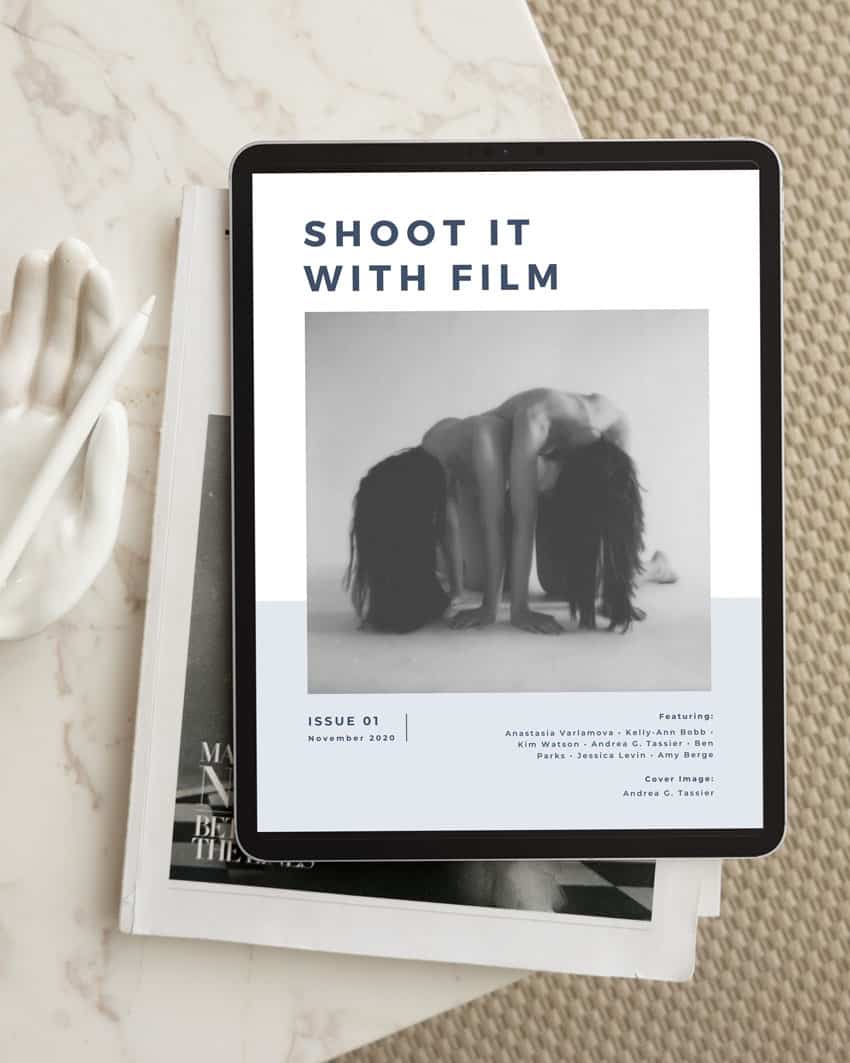


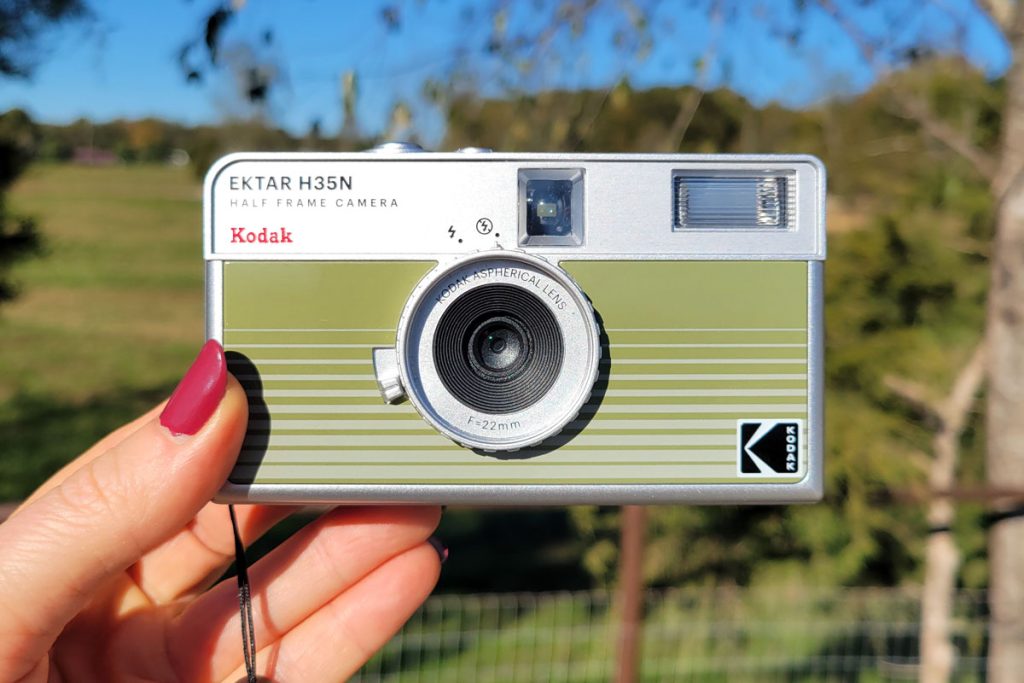
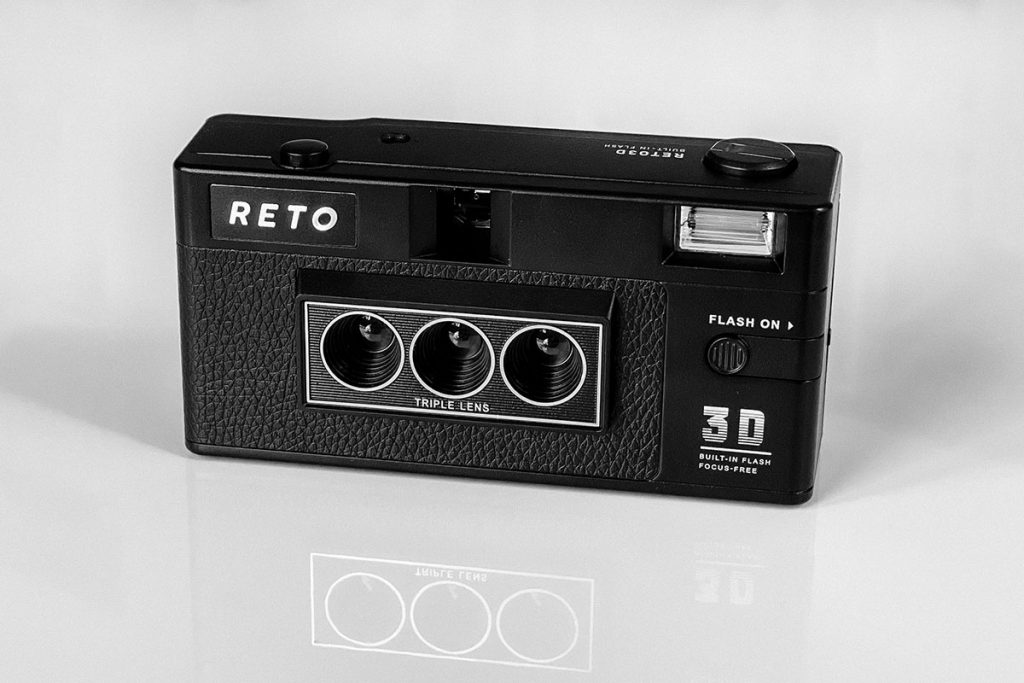



Blog Comments
Curtis Heikkinen
October 31, 2025 at 11:41 am
What a great review! The accompanying images are outstanding. I was curious about the camera so your review was well timed for me anyway. My interest lies more in vintage cameras but this model certainly has some attractive features and some distinct advantages. Thanks for all your work on this most informative review!
Taylor Blanchard
November 1, 2025 at 7:34 am
Curtis – I always appreciate your comments and thank you for reading! I definitely love the vintage cameras and so happy we have people who can still service and CLA them. The Pentax 17 certainly has some movement advantages.
Justin Lintecum
October 31, 2025 at 11:45 am
Great review Taylor! I’ve had my Pentax 17 since release. I haven’t used it quite as much as I thought I would, but I still really like the camera and agree with all your findings. And I also enjoy diptychs with the camera. I hope Pentax keeps investing in new film cameras. Maybe even make a new GR film camera. Or bring back an old SLR model that would work with the existing pentax lenses.
Taylor Blanchard
November 1, 2025 at 3:26 pm
Justin – very cool – I didn’t know you have this camera. Why do you think you haven’t shot it as much as you expected? Fingers crossed we get the next evolution of a film camera from Pentax.
Justin
November 21, 2025 at 3:47 pm
To many cameras to choose from lol. 72 frames can also be a little much if I want to get them developed quick.
Gary Syrba
October 31, 2025 at 2:35 pm
Very well written review, Taylor! I’ve had the Pentax 17 for about 6 months now. While I own 32 other cameras (mostly film – only 7 are digital) the Pentax 17 is the most fun to use for any of my not so serious photography. I missed the Olympus Pen that I borrowed in the mid 1980’s because of the half frame, so this was a very welcome treat! While you said you used faster film stock on your four roll test, if you get the opportunity to use the Pentax 17 again, I highly suggest CineStill 50D if you are shooting on sunny days. This film was wonderful in the half frame format – beautiful colors and nice minimal grain.
Taylor Blanchard
November 1, 2025 at 3:35 pm
Gary – I appreciate it – thank you for reading. Wow, 32 cameras is an impressive case of GAS ;). I was kicking myself for not picking a lower ISO film for this test (I love lower ISO films). Cinestill 50D will be on my list the next time I have the chance to use this camera (or if I eventually buy it).
Eddy
October 31, 2025 at 7:28 pm
Nice photos. They have alot of grain in them. Is that due being expired and higher ISOs? I hope you do a review of the new Lomo MCA that is coming out in December. It is more than the Pentax 17 but it is made of metal and has many bells and whistles.
Taylor Blanchard
November 1, 2025 at 3:39 pm
Eddy – yes I think the grain is due to my film choices (and maybe a bit with how I scan). I would love to shoot and review the new Lomo camera – it looks very impressive based on what I’ve seen.